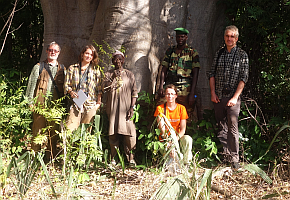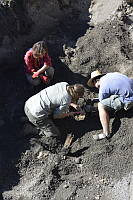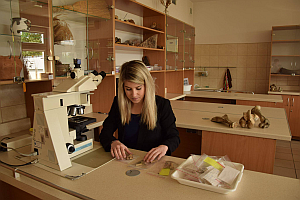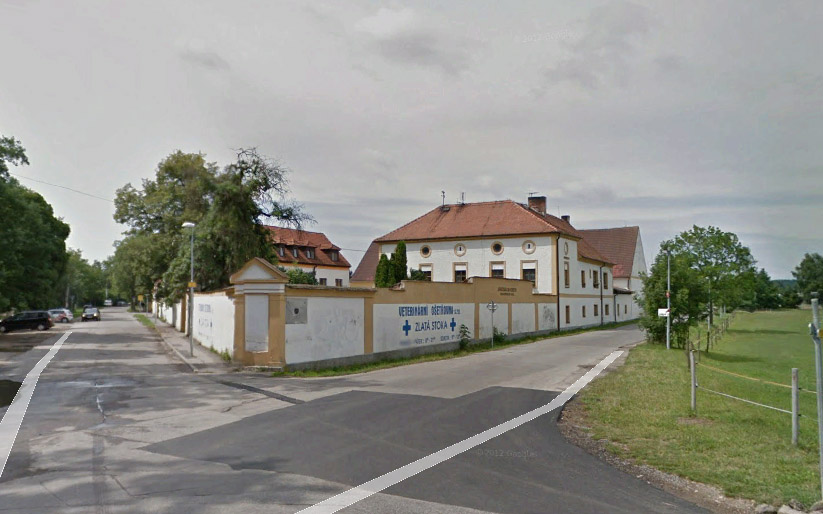The determination of charcoal and fresh wood remains ranks among the standard methods of archaeobotany. Such finds constitute a remarkable percentage of archaeological features and contexts. They inform us above all about the fuel composition which was used in the environment of the site. The analysis of larger assemblages of charcoal permits the reconstruction of deforestation processes and enables us to postulate the character of the wood around the site. The determination of charcoal from fire burial places also highlights some specific uses of wood in a cultural context. The analysis of fresh wood from medieval sites provides valuable data about handicraft production. In specific cases xylotomical analysis contributes to an understanding of wooden building structures.
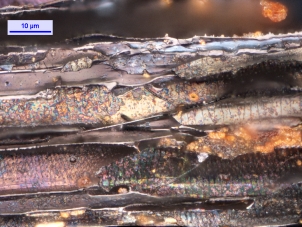
Podélný řez uhlíkem lípy (Tilia sp.)
Foto Jan Beneš
More than 100 determined individual fragments which allow statistical evaluation, e.g. an assemblages is appropriate for environmental reconstruction. There is a qualitative difference between the charcoal obtained by workers during an archaeological excavation and fragments obtained from the floating procedure. Common experience shows, that floated material comprises a richer spectrum of wood species. From the point of view of taxonomy it is usually only possible to identify samples at the level of the botanical genus (it is very difficult to determine a botanical species). For example the genus fir (Abies) is only represented in our ecological conditions by one species Abies alba.
In recently studied sites (the Neolithic site of Bylany, the Iron Age site of Lovosice) charcoal analysis recorded the development from natural woodland to a cleared synanthropic mosaic of woodland influenced by humans. At the site of Staré Prachatice (in the foothills of the Bohemian forest) an Iron Age pit house was excavated in 1997. The analysis of 500 fragments of charcoal recorded changes in fuel composition, which could reflect clearing of the woodland around the site over several decades.
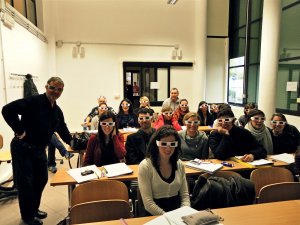
3D seminář mikrofotografie Jaromíra Beneše na Římské univerzitě La Sapienza
Foto L. Sadori
As an example of fresh wood analysis we can point out assemblages from ditches of the medieval Old Prague Town defence system. Hundreds of wooden fragments were produced by a nearby handicraft workshop which used fir as a raw material.
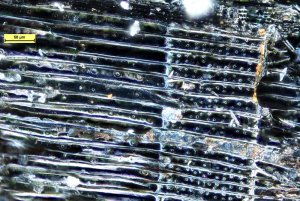
Podélný řez uhlíkem smrku (Picea sp.)
Foto J. Beneš
Pedoanthracology
Past vegetation and dynamics of tree species at local sites at the scale of millenia and centuries can be characterized using pedoanthracological analysis, i.e. soil charcoal. Fossil charcoal is frequently found in a soils with no or poor pollen preservation, and it is therefore suitable for reconstruction of local forest composition and fire history (e.g. Poschlod & Baumann, 2010; Touflan et al. 2010; Novák et al. 2012).
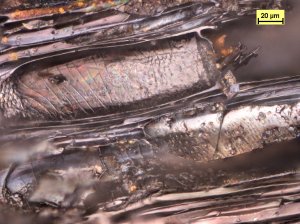
Tracheje uhlíku javoru (Acer sp)
Foto J. Beneš
References:
Novák J., Sádlo J. & Svobodová-Svitavská H. (2012): Unusual vegetation stability in a lowland pine forest area (Doksy region, Czech Republic). The Holocene 22: 947–955.
Poschlod, P., Baumann, A. 2010: The historical dynamics of calcareous grasslands in the central and southern Franconian Jurassic mountains: a comparative pedoanthracological and pollen analytical study. The Holocene 20: 13-23.
Touflan, P., Talon, B., Walsh, K., 2010. Soil charcoal analysis: a reliable tool for spatially precise studies of past forest dynamics. A case study in the French Southern Alps.The Holocene 20, 45–52
